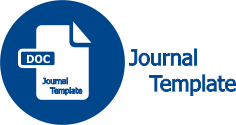User Requirements Analysis for Government’s Budget Information System Using Kano’s Model
Abstract
Keywords
Full Text:
PDFReferences
N. M. Salleh and P. N. E. Nohuddin, “Optimization of software requirement process: An integrated conceptual model of lean six sigma and requirement planning,” IRASE, vol. 10, no. 2, pp. 125–133, Dec. 2019, doi: 10.1556/1848.2019.0015.
D. Hallmann, “‘I Don’t Understand!’: Toward a Model to Evaluate the Role of User Story Quality,” in Agile Processes in Software Engineering and Extreme Programming, V. Stray, R. Hoda, M. Paasivaara, and P. Kruchten, Eds., Cham: Springer International Publishing, 2020, pp. 103–112. doi: 10.1007/978-3-030-49392-9_7.
E. O. C. Mkpojiogu, N. LailyHashim, and A. Hussain, “Enhancing the Quality of Software Requirements Artifacts with Scoring Rubrics-Assisted Reading Technique,” International Journal of Innovative Technology and Exploring Engineering (IJITEE), vol. 8, no. 8S, pp. 467–474, 2019.
K. Xu, Y. V. Chen, L. Zhang, and L. Rui, “Improving Design Software Based On Fuzzy Kano Model: A Case Study of Virtual Reality Interior Design Software.,” The Design Journal, vol. 22, no. sup1, pp. 1983–1992, Apr. 2019, doi: 10.1080/14606925.2019.1594923.
Directorate General of Budget, “SISTEM MONITORING DAN EVALUASI KINERJA TERPADU KEMENTERIAN KEUANGAN.” Ministry of Finance, 2019. [Online]. Available: http://www.anggaran-old.kemenkeu.go.id/dja/edef-konten-view.asp?id=1449
S. Santini et al., “User Requirements Analysis of an Embodied Conversational Agent for Coaching Older Adults to Choose Active and Healthy Ageing Behaviors during the Transition to Retirement: A Cross-National User Centered Design Study,” IJERPH, vol. 18, no. 18, p. 9681, Sep. 2021, doi: 10.3390/ijerph18189681.
M. R. Alfarisi, “Overview: Sekilas Tentang Sakti,” Jakarta, Aug. 31, 2022. [Online]. Available: https://klc2.kemenkeu.go.id/kms/knowledge/overview-sekilas-tentang-sakti-ae981c88/detail/
P. Madzík, P. Budaj, D. Mikuláš, and D. Zimon, “Application of the Kano Model for a Better Understanding of Customer Requirements in Higher Education—A Pilot Study,” Administrative Sciences, vol. 9, no. 1, p. 11, Jan. 2019, doi: 10.3390/admsci9010011.
F. Bozyiğit, Ö. Aktaş, and D. Kılınç, “Linking software requirements and conceptual models: A systematic literature review,” Engineering Science and Technology, an International Journal, vol. 24, no. 1, pp. 71–82, Feb. 2021, doi: 10.1016/j.jestch.2020.11.006.
Q. Meng and J. Dong, “Future Direction and Visual Analysis of Kano Model: A Literature Review,” JSSM, vol. 11, no. 04, pp. 399–413, 2018, doi: 10.4236/jssm.2018.114028.
V. Anu, W. Hu, J. C. Carver, G. S. Walia, and G. Bradshaw, “Development of a human error taxonomy for software requirements: A systematic literature review,” Information and Software Technology, vol. 103, pp. 112–124, Nov. 2018, doi: 10.1016/j.infsof.2018.06.011.
F. Rindani and S. Puspitodjati, “Integration of Webqual Method to Importance Performance Analysis and Kano Model to Analyze System Quality of E-Government: Case Study LAPOR!,” J. Sistem Inf. (J. Inf. Sys.), vol. 16, no. 2, pp. 1–17, Oct. 2020, doi: 10.21609/jsi.v16i2.937.
T. Choedon and Y.-C. Lee, “Classification and Evaluation of Service Requirements in Mobile Tourism Application Using Kano Model and AHP,” The Journal of Information Systems, vol. 27, no. 1, pp. 43–65, Mar. 2018, doi: 10.5859/KAIS.2018.27.1.43.
S. Shahidi, “Comparing the effectiveness of conventional and Kano model questionnaire for gathering requirement of online bus reservation system,” ijirss, vol. 3, no. 1, pp. 27–32, Mar. 2020, doi: 10.53894/ijirss.v3i1.30.
R. A. S. Putra and Priyanto, “Kano Model Analysis of Android Apps Quality from End User’s Preferences,” J. Phys.: Conf. Ser., vol. 1737, no. 1, p. 012016, Jan. 2021, doi: 10.1088/1742-6596/1737/1/012016.
K. A. Kamaruddin and N. A. Roslan, “Using Kano Model to Prioritize Requirements for UiTM Share Ride Mobile Application Development,” IJEAT, vol. 9, no. 1, pp. 1752–1757, Oct. 2019, doi: 10.35940/ijeat.A2653.109119.
M.-T. Lu, H.-P. Lu, and C.-S. Chen, “Exploring the Key Priority Development Projects of Smart Transportation for Sustainability: Using Kano Model,” Sustainability, vol. 14, no. 15, p. 9319, Jul. 2022, doi: 10.3390/su14159319.
C. Rawis, S. D. S. Karouw, and S. R. U. A. Sompie, “Software Requirement Specification Academic Information System of Sam Ratulangi University,” Jurnal Teknik Elektro dan Komputer, vol. 10, no. 2, pp. 107–118, 2021.
D. Januarita and W. A. Prabowo, “Software Requirement Specification Sistem Informasi Manajemen Rumah Makan Berdasarkan ISO/IEC/IEEE 29148-2018,” SISFOKOM, vol. 9, no. 2, pp. 215–221, Jul. 2020, doi: 10.32736/sisfokom.v9i2.872.
Y. Qu, M. Xinguo, S. Qiu, Z. Liu, X. Zhang, and Z. Hou, “Integrating fuzzy Kano model and fuzzy analytic hierarchy process to evaluate requirements of smart manufacturing systems,” Concurrent Engineering, vol. 27, no. 3, pp. 201–212, Sep. 2019, doi: 10.1177/1063293X19845137.
U. Ahmed, Amjad Farooq, and Tayyaba Farhat, “ReqSpecOnto: Investigating Explicit Software Requirements Specification,” ICR, vol. 1, no. 2, pp. 44–70, Dec. 2021, doi: 10.32350/icr.0102.03.
J. C. Pereira and R. de F. S. M. Russo, “Design Thinking Integrated in Agile Software Development: A Systematic Literature Review,” Procedia Computer Science, vol. 138, pp. 775–782, 2018, doi: 10.1016/j.procs.2018.10.101.
D. Lupita Sari and C. Niswatin, “Functional Requirement on Proofreading System,” JSW, vol. 14, no. 5, pp. 192–199, May 2019, doi: 10.17706/jsw.14.5.192-199.
A. Hussain, E. O. C. Mkpojiogu, and M. Kutar, “The Impact of Software Features’ Perceived Importance on the Perceived Performance of Software Products’ Quality Elements,” j comput theor nanosci, vol. 16, no. 5, pp. 2135–2140, May 2019, doi: 10.1166/jctn.2019.7863.
S. Albuga and Y. Odeh, “Towards Prioritizing Software Business Requirements in Startups,” in 2018 8th International Conference on Computer Science and Information Technology (CSIT), Amman: IEEE, Jul. 2018, pp. 257–265. doi: 10.1109/CSIT.2018.8486216.
Y. He and J. Zhong, Improve Requirement Prioritization By End-user Demands : Model Building and Evaluation. 2021. Accessed: Nov. 19, 2022. [Online]. Available: http://urn.kb.se/resolve?urn=urn:nbn:se:bth-22254
DOI: http://dx.doi.org/10.22441/fifo.2025.v17i1.002
Refbacks
- There are currently no refbacks.
Jurnal Ilmiah FIFO
Fakultas Ilmu Komputer Universitas Mercu Buana
Jl. Raya Meruya Selatan, Kembangan, Jakarta 11650
Tlp./Fax: +62215871335
p-ISSN: 2085-4315
e-ISSN: 2502-8332
http://publikasi.mercubuana.ac.id/index.php/fifo
e-mail:[email protected]

This work is licensed under a Creative Commons Attribution-NonCommercial 4.0 International License.














